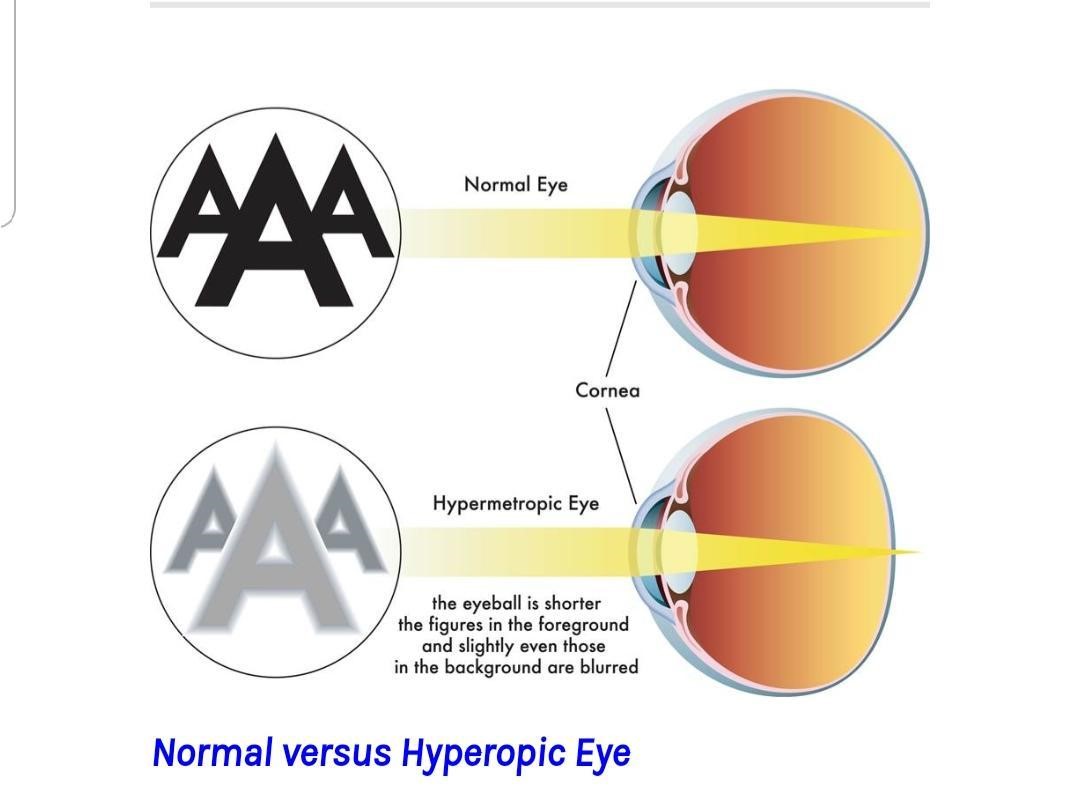
Refractive Or Optical errors such as Myopia, hyperopia, and astigmatism causes blurred vision due to an inability to focus images on the retina. If not corrected, their consequences can be particularly harmful to children since vision is developed in the first years of life.
WHAT CAUSES THEM?
The Dioptric power of the eyes is determined by two main factors:
- The cornea and crystalline lens: they provide the eye with its convergence ability since it is through the cornea and lens that light passes and converges to focus the image on the retina.
- The axial length: the distance between the anterior and posterior poles of the eyeball, which governs the need for greater or lesser convergence of light, depending on whether the eyeball is longer (myopic) or shorter (hyperopic).
Note: Refractive errors cannot be prevented but it is important to detect them early.
SYMPTOMS OF REFRACTIVE ERRORS IN A CHILD
Parents, teachers, and caregivers may notice that the child is having visual difficulties if the following is observed
- If the child holds reading materials too close to their eyes.
- If the child moves close to the television or board and prefers to sit in front of the class to be able to see.
- If the child squints or frowns while reading or copying from the board.
- If the child dislikes reading or near work.
- If the child loses focus or attention while performing a task.
- If the child complains of headaches and brow aches when reading or writing.
- If the child skips lines or misses words while reading or copying from the board.
- If the child experiences difficulties in differentiating some letters like “C” “G” and “O”, “E” and “F”, “N”, “M” and “H”
- If the child has watery eyes.
- If the child uses their fingers to guide their eyes while reading.
- If the child tilts his/her head to see or read.
- If the child closes one eye when looking at an object.
The problem can be detected at home, school, or pediatric check-ups.
But when two or more aforementioned symptoms are noticed repeatedly in a child then you should pay a visit to an eye doctor for a proper eye examination.


 Detection and Diagnosis
Detection and Diagnosis
Early detection and treatment of refractive errors are critical to the prevention of complications such as amblyopia (lazy eye) as well as learning and developmental difficulties that may occur due to uncorrected refractive errors.
The most effective way for the detection and diagnosis of refractive errors is the comprehensive eye examination. However, vision screening is commonly done as a quick and cost-effective way of identifying children who may have refractive errors or other common eye health and vision problems that are not obvious.
Note that vision screening is generally not effective for detecting more subtle problems that may threaten children’s eyesight.
AMBLYOPIA
Amblyopia or lazy eye is a leading cause of monocular vision loss in children. It is generally attributable to strabismus, anisometropia, combined strabismus and anisometropia or form deprivation.
STRABISMUS
The estimated prevalence of strabismus in the general population varies from 2.5% to 4.6% based on various studies. Although strabismus can develop at any age, it usually develops during childhood. Infantile esotropia has an onset prior to 6 months of age; accommodative esotropia typically has an onset between 2 to 3 years of age, but can develop before 6 months of age. Young children with constant unilateral strabismus often develop amblyopia and impaired stereopsis. Early identification and treatment of children with strabismus may prevent amblyopia and preserve stereopsis.
Treatment
Correction of refractive errors in children differs from the correction given to adults. A number of factors are taken into consideration before a decision to correct or not to correct a child is made. Factors considered include the age of the child, the degree of error, it’s impact on the daily activities of the child as well as his/her overall learning and development.
